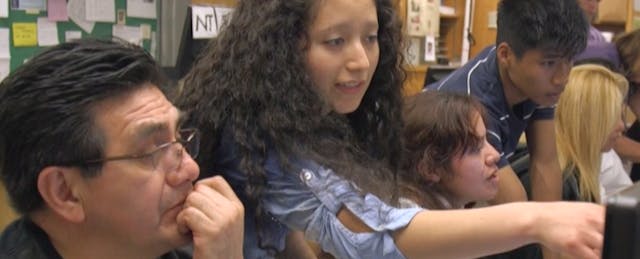While scrolling through my class rosters two years ago at the start of the year, I noticed that some of my students did not have family contact emails. I did not give it much thought at the time—perhaps parents didn’t want to give out their email and wanted to rely on phone for school communications.
A critical realization, though, came when I used our district’s gradebook system to send messages home about projects and classroom activities. As I prepared to send out an email about an upcoming project, it struck me again that not all parents would be reached. At that point, I went back and took a closer look at which households did not leave email contacts, and it soon became obvious that many of these were my Latino students.
At my district, Beaverton Schools outside Portland, Ore., we teach over 40,000 students, and 24 percent are Latino/a. Even when combined with collection efforts at Back-to-School Night, many of my guardian contacts could not be notified through our email. Some parents and guardians had never created an email address, while others had created one briefly but rarely used it and didn’t put it down in their contact information.
I have always maintained that involving parents in the educational process is essential to building a strong classroom culture. However, our school’s digital culture and my own lack of awareness meant that a significant number of families were being frozen out of critical and empowering information. This was a problem of practice that needed to change.
Creating a Community

As luck would have it, our school is fortunate to have a strong advocate for our Latino students: an energetic community liaison named Maria. With the support of our administration, we crafted a plan to host monthly parent technology nights tailored to meet the needs of our Latino community (check out a short video we made to see them in action). Initially, it seemed like a fairly easy proposition: We would just pick a date and invite parents to show up and we could talk to them about technology use, communications and what our one-to-one Chromebook distribution meant for their family. However, long-term community-building is rarely that simple.
First, we needed to notify parents about the event without relying on email or any other digital communication tool. Maria recorded a message about the event in Spanish that was sent to parents by our school auto-dialer. We also recruited student volunteers from our Latinos Unidos Club to spread word about the parent night to their families and the broader community.
After publicizing the event, we needed to focus on basic logistics. We secured on-site daycare, inviting refreshments and additional translators. We wanted to ensure that our parent nights were engaging, lively, informative and affirming.
Finally, we identified the most critical elements of digital connectivity and planned speakers and activities to highlight how parents can be more attuned to what is happening at school. We planned to educate parents about internet safety, digital citizenship and Chromebook management. We also celebrate the successes of our students (as well as their challenges) and have leaders from our Latinos Unidos Club discuss technology use with parents. Informational topics aside, we knew that doing hands-on computer training at every meeting would be essential. This meant:
- establishing email accounts for parents who had never used email.
- demonstrating how to access their student’s attendance and academic records.
- showing them how to navigate to our school district’s web page and switch it over to a version in Spanish.
- creating a web page scavenger hunt for parents to practice locating essential information.
- assuring parents who had no computer experience that we were all in this together.
Empowering Parents
I am always amazed at how grateful our parents are for the opportunity to learn and to become a greater part of their child’s school. But not all learning and community building is comfortable for every participant.
At the end of one evening session, as we were discussing how to contact teachers and to access attendance, we heard a parent in the back of the room talking loudly to their child. Apparently, the parent logged into their student’s attendance record and realized that their student was skipping a math class. As the mother sternly warned her daughter about proper academic behavior, a small tear trickled down the daughter’s cheek. Those of us nearby certainly felt bad about the family tension. As we were leaving, however, we realized that we were doing what we set out to accomplish: empowering parents to actively participate in their student’s education and lead them to success.
In households that don't use technology regularly, it is often the children who teach their parents how to accomplish various tasks using the internet. Given this reality, it is important to respect that the impact of integrating technology into schools extends far beyond the classroom. Parents (especially those who haven't used a lot of technology) often assume that younger people are "just good at it" because they grew up with it.
But as research is starting to show, this is not necessarily the case. When schools explicitly teach digital citizenship and literacy ideas, students, in turn, can take these ideas home. If parents become more aware of some of the challenges around technology use, both parents and students can work as a team to address those challenges together.
In the end, it is critical that schools offer extracurricular opportunities for parents to learn how to navigate their district’s digital presence in addition to students receiving direct instruction on digital citizenship within classrooms. Assessing our communication methods and cultivating parental digital skills is a critical step in building stronger communications and a more participatory and inclusive school culture. Our parent contact information still isn’t perfect, but building a stronger community through hands on technology nights has certainly helped.
Matt Hiefield is a Future Ready teacher on special assignment (TOSA) at Beaverton School District in Oregon.


